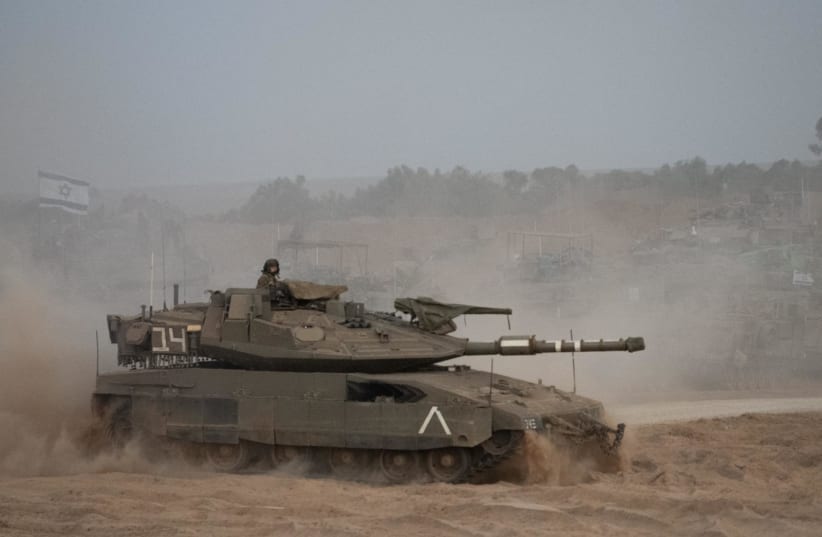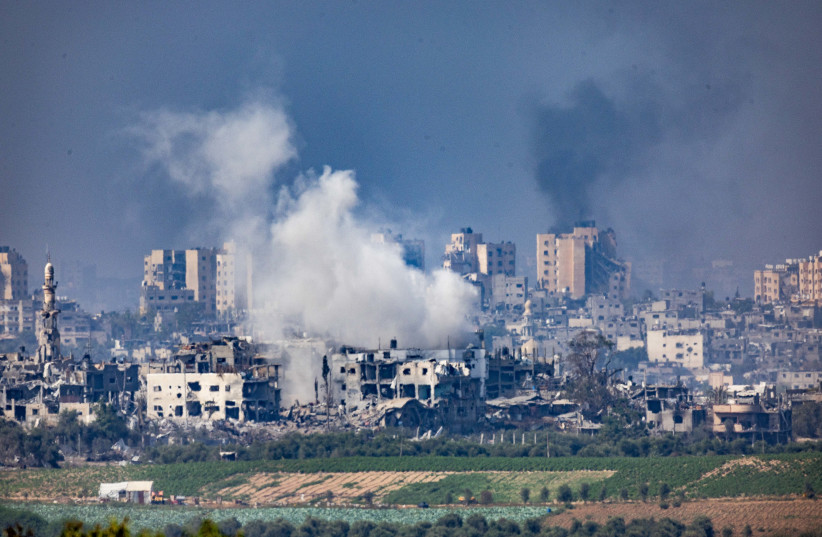Israel is facing its first real test in the ground invasion of Gaza.
Two soldiers were seriously wounded as the invasion widened overnight on Sunday. There was also an incident where a vehicle overturned and killed a different soldier.
At first glance, these appear routine and within the scope of the tragic losses of war. In fact, given that around 1,400 Israelis have been killed so far, and IDF soldiers have been killed or wounded in cross-border ambushes by Hamas or Hezbollah nearly daily, these new losses, while tragic, would not appear to register as particularly significant in the greater strategic calculus.
Still, they are. Because, to date, all the losses were essentially about restoration of sovereignty and maintaining border security, these new losses mark the counter-invasion – the choice aspect of the war.
Hundreds of soldiers died while driving Hamas’s legions of invading terrorists from the South. Dozens have died or been wounded since October 7 in the effort to prevent Hamas and Hezbollah from new intrusions or ambushes – all while protecting the border.
While there is both internal and external support for a ground invasion, everything about it: what it looks like, how long it will be, and how much risk IDF soldiers will encounter, are all variables that are subject to debate and change
Video footage from the ground invasion so far shows airstrikes and vehicles moving in sandy areas, not yet in deeply urban areas. There is a massive difference between sending 5-10% of IDF infantry into deeper Gaza urban settings, and 30-40%, or a vast majority of IDF forces.
Those are all different options that the IDF has, which can shift the speed at which the war moves, change the amount of pressure on Hamas, and carry varying degrees of risks for a ceasefire.
The more IDF soldiers go in, the more likely they are to get ambushed and die. But the more that go in, and faster they do it, the sooner Hamas can actually be dismantled. Conversely, the fewer go in, the fewer die, but the greater the risk that the world will pressure Israel into a ceasefire before Hamas is actually toppled.
Will Israeli ground forces go in larger numbers into urban areas in the North, but smaller in the South? When will the IDF invade Shifa Hospital to get at some of Hamas’s top leaders? The same is true with numerous other sensitive and dangerous areas, whether they be mosques, tunnels, or nominal UN areas.
Israel could lapse into past policies concerning handling of Hamas
This could be the moment where Israel could lapse into a version of the “Vietnam syndrome,” which prevented the country from comprehensively dealing with Hamas in every “round” of conflict since 2008-9. After the US lost the war in Vietnam, including a large number of casualties, Washington refused, for over 15 years, to use ground troops in any significant quantity, until the Gulf War in 1991.
Since the First Lebanon War in 1982, Israel has generally refrained from any substantial incursions as well.
The Second Lebanon War in 2006 and the Gaza wars in 2008-9 and 2014 were the only times that Israel really dabbled with an incursion into territories that it had completely withdrawn from, in order to restore deterrence or create the conditions for quieter borders – and each of those invasions was very limited.
With world pressure against a broader invasion, and with the government clearly so worried about the consequences that it delayed the invasion for around two weeks from when it could have first started logistically, will decision-makers have the fortitude and determination to accomplish their stated goals of toppling Hamas?
Or, will growing Israeli casualties during the invasion lead to making the strategy even more careful about force protection, something which at some point could make it difficult to fully accomplish hunting down Hamas forces in whatever tunnel, mosque, or hospital they might be hiding in?
Airpower is the IDF’s major advantage, but has limits in urban settings.
This is only the beginning of ambushes Hamas will use against IDF forces from tunnels, booby-trapped doors, kamikaze drones, and all kinds of other guerrilla warfare methods.
If Israel is to accomplish the stated goal of toppling Hamas, it will need to be prepared for more loss.

